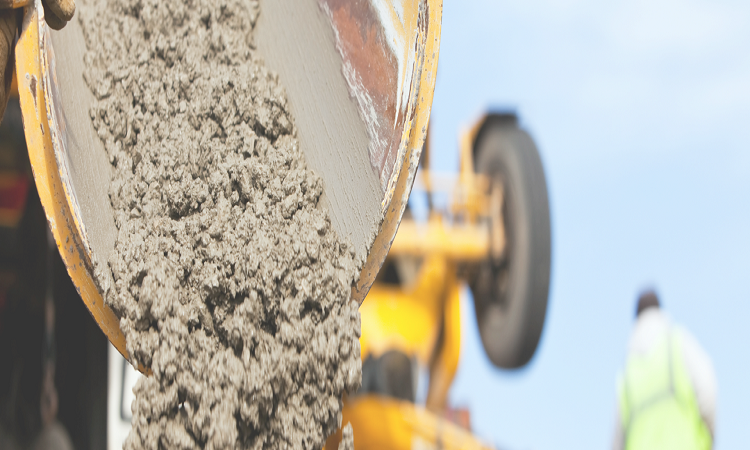Green concrete is a revolutionary topic in concrete technology history. Green concrete was first developed in Denmark in the year 1998. Green concrete has nothing to do with color. Green concrete is the type of concrete that is much like traditional concrete but the production of such concrete needs a minimum amount of energy and causes the least harm to the environment. Green concrete is a concept of using eco-friendly materials in concrete hence, green concrete is also known as eco-friendly concrete or environmentally friendly concrete.
Green concrete is very inexpensive to produce because; it is made with the use of waste materials as one of its components. The size of the construction industry all over the world is growing at a faster rate. The huge construction growth boosts demand or requirements for construction materials.
Aggregates are the main constituent of concrete. Because of continuously mining the availability of aggregates has emerged problems in recent times. To overcome this problem, there is a need to find a replacement to some extent and the solution to these problems is “Green Concrete”.
Green Concrete is an environment centered thinking concept. It considers every aspect from raw materials to its manufactures over mix design to structural design and service life.
What is Green Concrete?
Concrete which is made from concrete wastes as one of its components that are eco-friendly is called “Green Concrete”. Concrete that uses less energy in its production and produces less carbon dioxide (CO2) than conventional concrete is green concrete.
The goal of the center for Green Concrete is to commute the environmental impact of concrete. To enable this, new technology is developed. The technology considers all aspects of a concrete construction’s life cycle, i.e. structural design, specification, manufacturing, and maintenance.
Need of Green Concrete
- The main ingredient in green concrete or eco-friendly concrete is cement and it consists of limestone.
- During this process, carbon dioxide (CO2) is released.
- Approximate 1 kg of concrete releases about 900gms of CO2 in the atmosphere.
- Therefore green concrete or eco-friendly concrete came into the existence to reduce the emission of CO2.
The List of Materials Used in the Production of Green Concrete
- Fly Ash
- GGBS (Ground Granulated Blast Furnace Slag)
- Recycled demolition waste aggregate
- Glass aggregates
- Manufactured sand
- Rice husk ash
- Coconut husk ash
- Groundnut shell ash
- Sugarcane bagasse ash
- BFS (Blast Furnace Slag)
- Silica fume
- Metakaolin
Application of Green Concrete
- It is used in the construction of bridges, dams, retaining walls, etc.
- Green concrete is widely used in the building construction
- It is used in the construction of column
- Green concrete can be used in the road construction
Advantages of Green Concrete
Green concrete has many advantages over traditional concrete such as:
- Green concrete or Eco-friendly concrete uses local and recycled materials like fly ash, GGBS (Ground Granulated Blast Furnace Slag), artificial aggregates, etc in the concrete.
- Green concrete reduces CO2
- It reduces environmental pollution.
- Green concrete has thermal resistance and acid resistance.
- Green concrete or Eco-friendly concrete reduces the consumption of cement overall.
- It is economical compared to ordinary concrete.
- It has better workability than conventional concrete.
- Green concrete helps in the disposal of industrial waste as it uses waste and recycled materials from the industries in the concrete. Like fly ash, rice husk ash, etc.
- Green concrete or Eco-friendly concrete not only helps in recycling of industrial waste but also solve the disposal problem.
- Green concrete or Eco-friendly concrete is suitable for mass concreting because the heat of hydration of green concrete is significantly lower than ordinary concrete. This results in a lower temperature rise in mass concreting pour this is a distinct advantage of green concrete.
- There is not much difference in the preparation of green concrete or eco-friendly concrete compared to conventional concrete.
Disadvantages of Green Concrete
- Structures constructed with eco-friendly concrete have comparatively less life than structures with conventional concrete.
- Compressive strength and other characteristics are less compared to conventional or ordinary concrete
- In the green concrete or eco-friendly concrete, the cost of the reinforcement increases with the use of stainless steel.
- A detailed life cycle analysis of green concrete or eco-friendly concrete by considering different parameters is a must to understand the resultant concrete properties.
- Water absorption is high compared to conventional or ordinary concrete.
- Its shrinkage and creep properties are high compared to conventional or ordinary concrete.
- Flexural strength is less in eco-friendly concrete

